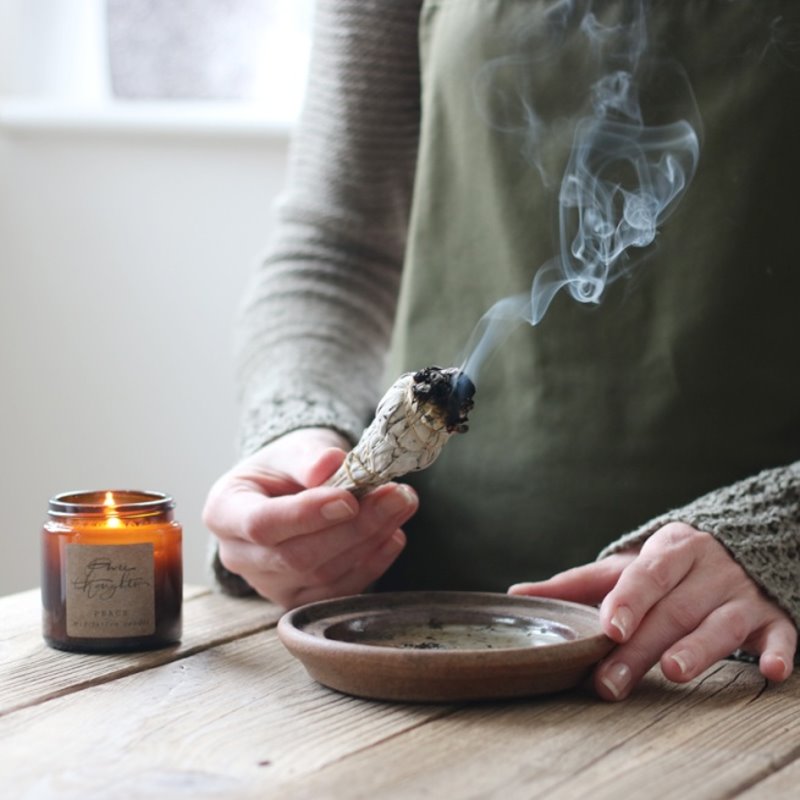
White sage specifically has been used by Native Americans for thousands of years for cleansing, purification, warding off evil spirits, and negative energies.”Īfter you set an intention it’s up to you on how frequently you’d like to do it. “Sage comes from the Latin word ‘salvia’ which translates as ‘to heal.' Often, burning sage can bring forth wisdom and clarity as it increases your spiritual awareness,” she continues. “This sacred plant medicine offers a grounded and clear energy while also enhancing creativity and/or bringing forth good fortune,” she shares. “Known as ‘holy wood’, Palo Santo is able to be used once these trees have naturally fallen in the rainforest and lie dead for four to ten years before they are harvested,” explains Sabrina Riccio, a soulistic alchemist, soul activator, and medicine priestess. But, there’s a bit of confusion about what to use (and when) since each plant medicine has its own unique benefits. While there are many ways to smudge, people traditionally lean towards either palo santo or sage to keep the good vibes going. Plus, you also get the benefit of some aromatherapy, too. While you might not particularly believe in spirits or energies, this is a helpful wellness exercise during the pandemic and beyond. With COVID-19, we are all looking for ways to clear bad energy from our households, especially as we are spending a lot more time at home and we are possibly feeling more haunted these days. Smudging can be an amazing way to cleanse your space now more than ever. Essentially, the practice can “unstick energies stuck to the aura of objects and people,” according to Lee. In short, smudge ‘deposits’ the energy of the plant into the space helping to dissipate old, lingering energies. “Smudging is the use of sacred plant medicine to bring or clear energy into a space using the combined elemental energies of fire (flame), earth (plant), and air (smoke),” explains crystal healer, Azalea Lee. It has been an ancient cleansing practice for many cultures, particularly those of Native American descent, and has roots in Asia and the Middle East as well.

It’s no surprise that the practice of smudging has accelerated in popularity, but the ritualistic burning of woods and herbs is by no means new. Along with Florida Water (ICYMI: Solange brought her own bottle to the Met Ball), it’s been my saving grace in new or uncomfortable environments.

My mother, aunts, and grandmother often reminded me to “clear the space” prior to getting cozy. Some sage bundles will even be made with sweetgrass incorporated into the bundle.Growing up in a Caribbean household, the smell of sage was always omnipresent. Sweetgrass is not a type of sage, but is often used in conjunction with it, or even as an alternative. It scent is similar to frankincense with some citrus notes. Palo Santo is a sacred wood from the Andes. The scent is strong and tends to linger longer indoors. Mountain and Desert Sage is best for outdoor ceremonies.
Sage burning windows#
It has a clean scent, and the smoke dissipates from a room quickly when doors and windows are opened. White sage is what people typically burn, especially indoors. Smudge sticks can be re-lit and used several times. This will prevent the bundle from falling apart.

If the string holding the smudge stick together breaks or burns, simply re-tie the string further down the stick. You can also snuff it out by pressing the smudge stick into the fireproof container and applying a bit of pressure. When you are finished smudging your home, extinguish your smudge stick by dipping it into sand. Work your way from room to room, concentrating on corners, where negativity gathers. Begin at your front door, and wave the smoke into the air. It is a ritual to reinforce your own positive energy within your home. Smudging alone will not create a sacred space.

Blessing your home, casting out the negativity, and bringing in the positive energy. While smudging, keep in mind your intention. Never set the smudge bundle down on anything other than a fireproof surface. You can use a feather to fan air onto the smudge stick and to disperse the smoke. Sage sticks tend to go out without constant air flow. Once lit, blow out the fire, and the smudge stick will smolder, much like an incense stick. An abalone shell or a ceramic bowl is a perfect container. Light your sage smudge stick with a match or lighter, over a fireproof container.


 0 kommentar(er)
0 kommentar(er)
